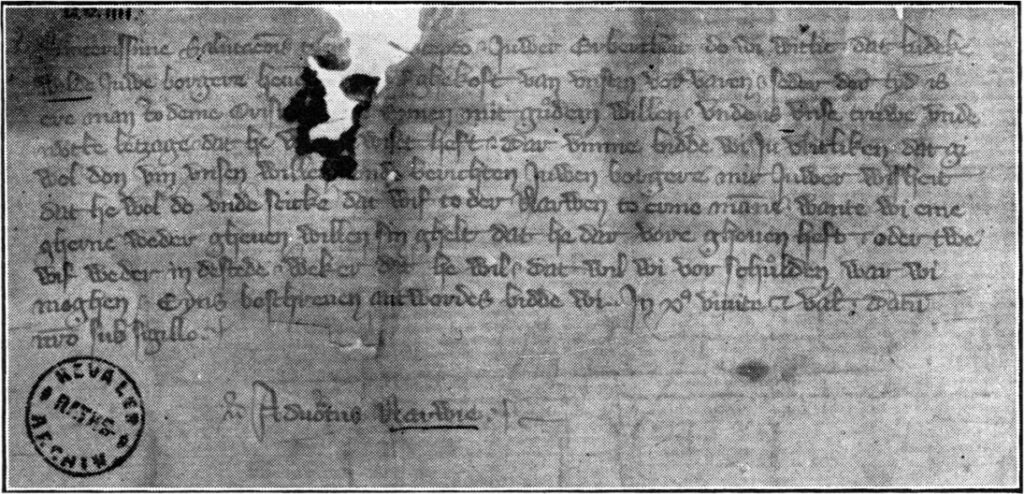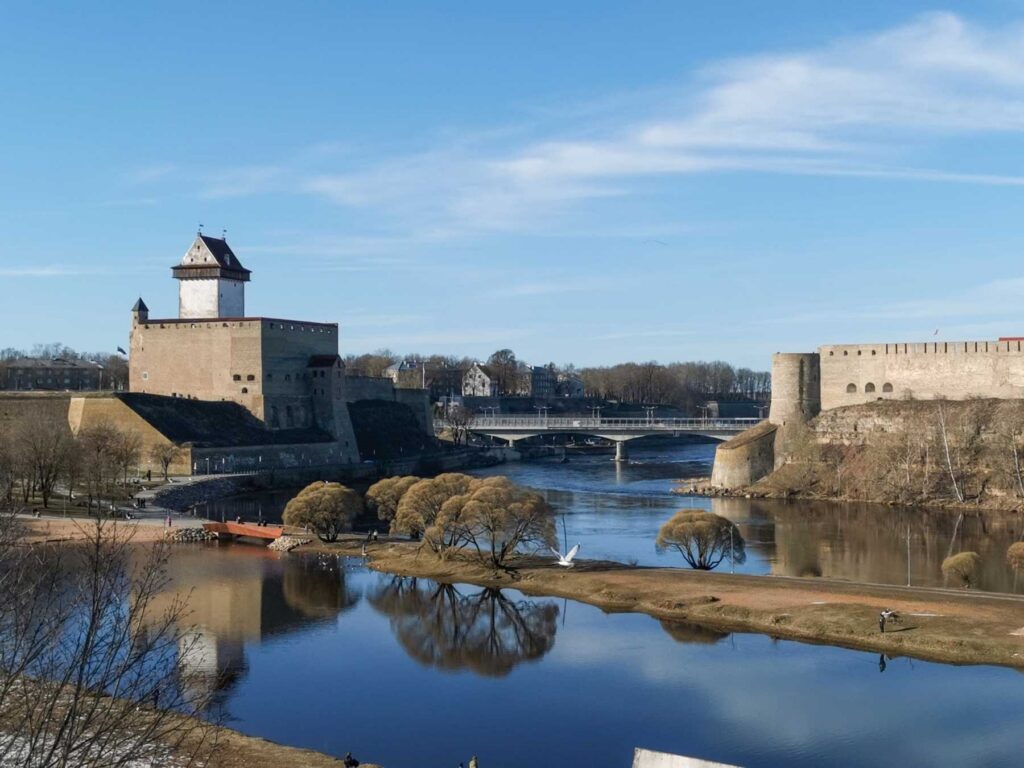History of Narva. The first decades under the rule of the order. Burning the city in 1367

Arnold Paul Suvalep
“History of Narva. Danish and Livonian periods «
(Start Here)
The transition of Narva to the rule of the order did not bring large changes in the population. The Danes among the population of the cities of Estland were few before. The population of the city consisted mainly of Germans and indigenous people. The Danes were only among officials, clergy and military. With the transition of the city under the rule of the order of the Danes, of course, they left, and their places were taken by the order authorities. Some of the Danes from among the military, undoubtedly, switched to the service of the order, and the few citizens of Danish origin remained, probably, to live on calmly. In the legal position of the city, some changes occurred. Khari-Viru vassals refused primarily from their rights in relation to the city received in Danish times. The city now began to be constantly called Vickbilde, this meant that it received simplified self -government led by Order Fogt.
The first concern of the authorities of the order was the struggle against paganism that still existed here. The most stringent measures were taken to eradicate the latter.
The pagan wives were given to slavery, they were taken away from husbands and sold. In the Tallinn City Archive, a letter from the Narva Vogt was preserved, dating back to the beginning of the Livonian rule, in which he writes that his predecessor sold the woman to citizen Tallinn Ludek Wilde. However, since the husband of this woman turned into a Christian faith and became a “reliable conductor”, a woman needed to urgently return her husband to Narva.
The money received from the sale promised to return the money immediately; In the case, if this version of the current owner of a woman does not suit, then they agreed to give two women in return for this. As you can see, the pagans had quite a few pagans, so that women could alienate in pairs.
The order immediately began to strengthen the Narva Castle. The Vartberg chronicle indicates that the great master of the Order of Henry Dudzer immediately after the inclusion of Estonia in his possessions strengthened the castles of Tallinn, Rakvere and Narva with walls and ditches, spending heavily funds on the construction of defensive structures and towers.
The first concern of the authorities of the order was the struggle against paganism that still existed here. The pagan wives were given to slavery, they were taken away from husbands and sold.
Soon, large -scale work was done to strengthen the border. Using the difficult situation of the Russians engaged in the war with the Swedes, who at that time was accompanied by success, especially in the area of the nut island (notteur), the order broke the peace treaty with Pskov. The army of the order in June 1348 crossed the Narva River and ruined the villages of Zanarovya. In the spring of the next 1349, the Livonians built on the site of the current Vasknarva opposite Pskov’s “Isada” their wooden castle. The castle did not last long, because The Pskovs quickly gathered the army under the command of the posadnik Ivan, partly by boats along the Lake, partly on horses along the lake, approached the castle and burned it. The Germans and Estes defending the castle were killed while trying to escape or burned with the fortress, as Russian sources tell.
Later, the war between the Order and Pskov passed into South Livonia, thanks to which Narva trade revived again. But already in 1362 new difficulties arose. The master of the order, along with his army, invaded the Pskov lands, which is why many German merchants were detained in Pskov. In turn, Novgorod merchants were detained in Tartu. In 1363, in Novgorod, a meeting of representatives of Tartu and Viliandi took place, i.e. The ambassadors of the bishop and the order with the Pskov ambassadors, which ended to no avail. Only thanks to the energetic intervention of Novgorod, who immediately sent his representatives to Tartu, managed to come to an agreement and conclude a peace treaty, as a result of which trade relations resumed and all hostages were released.
Already in 1367, new disagreements arose. Among them were disputes on the issue of fishing on Lake Peipsi. In particular, Russian fishermen prevented the people of the Order and the Tartu Bishop to catch fish on the lake. When the warring parties once again met on the lake, the fishermen of the Order arranged a cruel lynch over the Russians – they drowned one part of the Russians in the lake, they hung the other part on the shore, and burned their dwellings and fishing nets. This case served as a rather serious reason for the war. The Russians invaded South Livonia and soon the fire of the war reached Narva.
In September 1367, Komtur Tallinn von Dubenborch, along with the army of the Order, crossed the Narva River and ruined the Vodsk lands within five days. From Tallinn, 15 warriors in military armor, led by members of the magistrate, took part in a military campaign. The Pskovichi, for their part, answered the campaign under Narva, sending three military detachments. On November 2, 1367, the Pskovichi vessels approached Narva and set fire to all parts of the city outside the castle. There is no doubt that the city was then surrounded only by wooden picket fence, which could not represent serious protection in the event of an attack. Residents of the city took refuge behind the walls of the castle and Forbourg. Another Pskov detachment moved through the Vasknarva on Yykhvi and destroyed the fortified parish church there. The third detachment joined the battle with the Germans at the mouth of the Narva River and lost about 300 soldiers. In connection with the attack of the Russians on the territory of Estland, the Tallinn Magistrate made a response blow to Russians near Rakvere. With the onset of winter, military operations ceased.
In 1368, the Order began to seriously prepare for war with the Russians. Master of the Order of Wilhelm von Frimersheim asked the Hanseatic cities to stop any transportation of goods to Russians. Lubeck made an appropriate order, but at the same time complained that the cities of Livonia did not adhere to the ban on trade with the Russians, and their merchants still go to the Neva, Vyborg and Narva and trade with the Russians there. Thus, already in those days in Narva, smuggling flourished, which was apparently engaged in Tallinn.
To begin, hosts were requested by the blessing of the Pope. In September 1368, Pope Urban V published Bull that the leadership of the Order, including the Narva Vogt, which will go into battle against atheists, schismatics and pagans and who has their own banners, as well as who, going on a military campaign, will not want to wait for the sunrise, they can dispose of the Messa priests at dawn at dawn before the sun sun. On November 3, 1368, the Pope granted the leadership of the Order the right to use marching altars.
(To be continued)
The Post History of Narva. The first decades under the rule of the order. Burning the city in 1367 FIRST Appeared on gazeta.ee.







